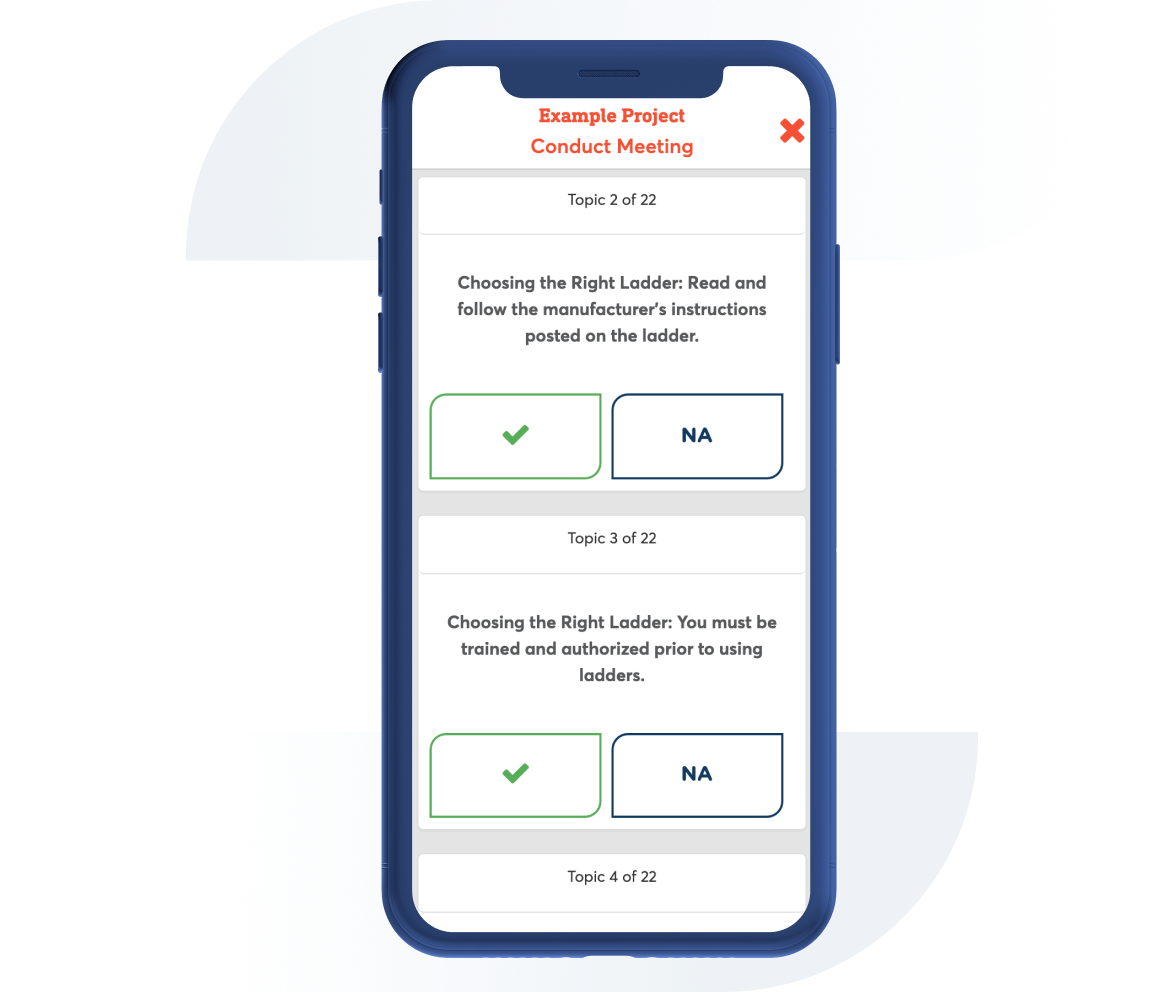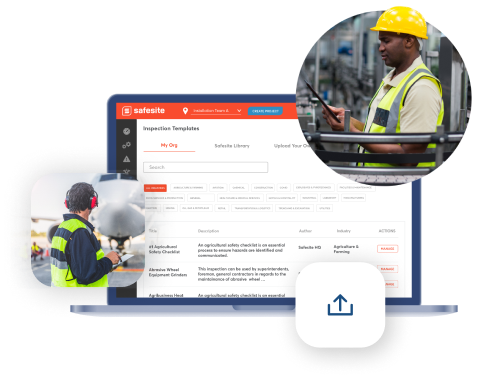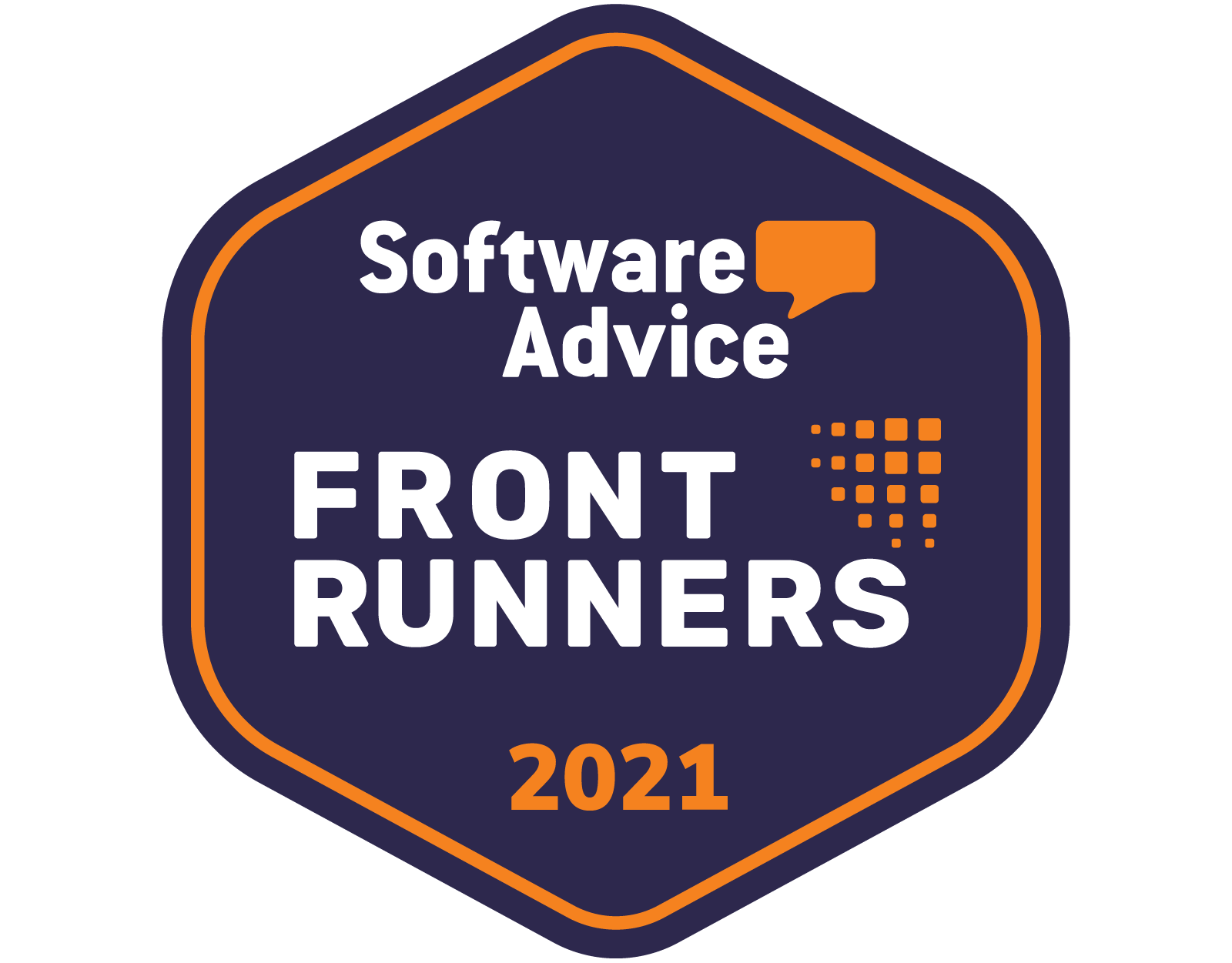OSHA Respiratory Protection Program Basics Meeting
Contributor: Safesite Jurisdiction: OSHA
This meeting covers the basics of OSHA's Respiratory Protection Program, which requires the participation of all employees required to wear a respirator to ensure hazards have been identified pre-use.

1. If employees are required to wear respiratory protection, the company must establish a Respiratory Protection Program. This consists of: 1. Written procedures on selection, use, storage, cleaning, disinfecting, and inspecting respirators. 2. Medical Evaluation 3. Training 4. Fit testing 5. Regular or annual evaluation of the effectiveness of the program.
2. The following topics are about Respirator Selection
3. Immediately dangerous to life and health (IDLH) is any atmosphere that poses an immediate hazard to life or poses immediate irreversible debilitating effects on health.
4. Air Purifying Respirators (APR) remove specific air contaminants by passing ambient air through an air-purifying filter, cartridge, or canister. APRs are either non-powered or powered. APRs are not approved for use when oxygen content is below 19.5%.
5. Atmosphere supplying respirators are either self-contained or airline units. The Self-Contained Breathing Apparatus (SCBA) is completely portable. The airline apparatus requires the trailing of an air hose from the wearer to the source of breathing air. These types of respirators can be used in Oxygen deficient environments.
6. The following topics are based on Medical Evaluation
7. The effects of physical work effort, protective clothing, temperature, humidity, and the psychological burden placed on a worker using a respirator is considered during the medical evaluation for respirator use.
8. Before putting on a respirator (even for a fit test) an employee must receive a medical evaluation from a physician or other licensed healthcare professional to ensure the employee can safety wear a respirator. This can be done through a medical questionnaire or examination. However if a questionnaire is used, follow up from a physician may be necessary for some employees. These evaluations are kept confidential. No medical information will be disclosed to your employers. They will only receive a written recommendation to whether you are medically able to wear a respirator and if follow up evaluations are necessary.
9. The following topics are regarding Respirator Fit
10. Even a small gap between the respirator and your skin can let in contaminated air, potentially causing injuries or even death. A respirator must fit securely but not too tightly. Your nose should not be pinched, Your skin should not be irritated or uncomfortable. The respirator should not slip on your face, and you should have the ability to move your head and talk. A good fit is found by undergoing an annual fit test and before use seal checks.
11. Annual Fit Test is performed before the first time a respirator is used and annually. If multiple types or brands of respirators are used, a fit test is required for each one the employee will be using.
12. Before putting on a respirator, always check for wear and damage. Look for holes, tears, cracks or snags that could let in contaminated air, Make sure all of the connections are tight. You should take special note of any rubber parts that can deteriorate. Look at the facepiece, headband valves, connecting tubes, fittings and filter. If you are using a respirator that has an air or oxygen cylinder supply, make sure its fully charged according to the manufacturer's instructions. Store respirators to prevent damage and deformity. Any respirator that does not pass inspection must be immediately removed from service. Use a Do Not Use Tag to ensure it isn't put back into service.
13. User Seal Check, Positive Pressure Test: Close the respiratory exhalation valves and breath out gently into the facepiece. This should cause the facepiece to bulge out slightly. If you do not hear or feel any air leaking out, you have a good fit.
14. User Seal Check, Negative Pressure Test: Close the respiratory inhalation valves and breath in gently. The facepiece should collapse slightly against your face. Hold your breath for 10 seconds. If the facepiece stays collapsed and no air leaks in, you have a good fit.
15. The following topics are in regards to Cleaning and Repair
16. Respirators must be cleaned regularly and always before changing users.
17. Any repairs need to be made by experienced and trained personnel.
18. Write Comments or Remarks here:
Additional Comments

Can't find what you are looking for?
